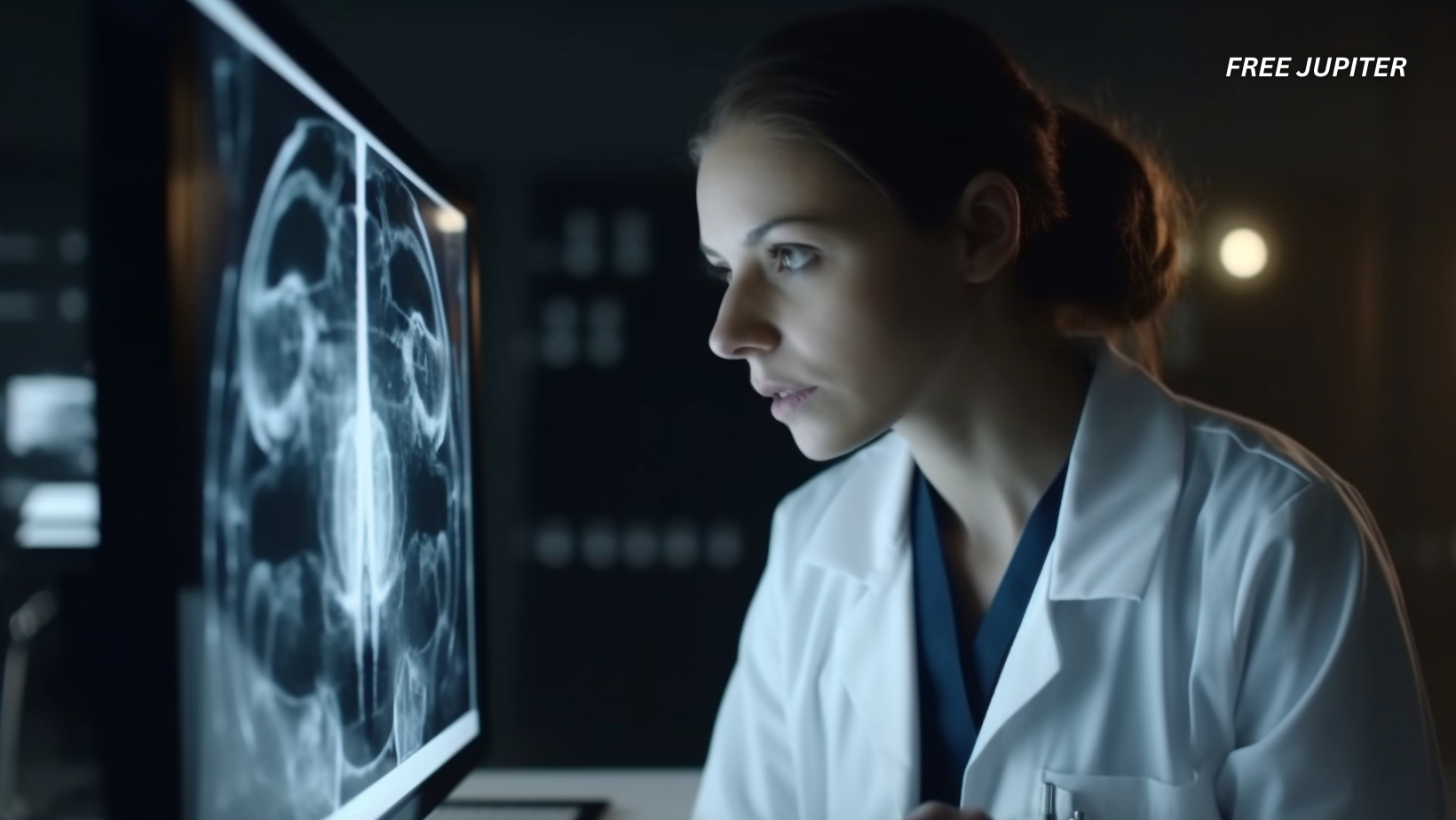Friendly Note: FreeJupiter.com shares general info for curious minds 🌟 Please fact-check all claims—and always check health matters with a professional 💙
Medical imaging might feel like something straight out of science fiction—machines that can look inside you without a single incision. But for doctors, it’s an everyday necessity. These scans are like secret windows into the body, revealing injuries, diseases, and even the earliest signs of trouble before symptoms fully appear.
Among the most common are X-rays, CT scans, and MRIs. While they might all be “scans,” they work in different ways, serve different purposes, and have their own pros and cons. Think of them as three different styles of photography: one’s a quick snapshot, another’s a detailed 3D model, and the last is a high-resolution portrait that captures every subtle detail.
X-rays: The Fast and Familiar Option
If medical scans had a celebrity, the X-ray would be it. Invented back in 1895 by Wilhelm Röntgen, X-rays completely changed the way medicine was practiced. For the first time, doctors could see bones without surgery—an almost magical breakthrough for its time.
How They Work
X-rays are a form of electromagnetic radiation. When an X-ray machine is switched on, it sends a controlled burst of these rays through your body. Dense materials like bones absorb more of the rays, appearing white on the image. Softer tissues—like skin, muscles, and fat—let more rays pass through, so they appear darker.
Read more: Your Heart Has 40,000 Neurons—And It Talks to Your Brain More Than The Brain Talks To The Heart
Best Uses
- Broken bones – The gold standard for spotting fractures.
- Dental checks – Your dentist’s go-to for cavities, root problems, or impacted teeth.
- Chest exams – Useful for spotting pneumonia, lung infections, or even heart enlargement.
- Detecting tumors – Especially when they affect dense tissues.
Advantages
- Extremely quick—often done in seconds.
- Widely available in hospitals, clinics, and even mobile medical units.
- Low cost compared to other imaging tools.
Limitations
- Not great for soft tissue detail. You won’t get much information about the brain, muscles, or ligaments from an X-ray.
- Still involves a small amount of radiation, so repeated scans are minimized when possible.
CT Scans: The 3D Mapmakers
If an X-ray is like a flat photo, a CT scan (Computed Tomography) is like a 3D model you can rotate and examine from every angle.
How They Work
CT machines use X-ray technology but take it further. The scanner rotates around you, taking multiple “slice” images from different perspectives. A computer then compiles these slices into a layered, detailed view of the inside of your body.
Imagine slicing a loaf of bread and looking at each piece individually—that’s essentially what a CT scan does, except with your internal organs and tissues.
Best Uses
- Internal bleeding – Especially in emergency trauma situations.
- Blood clots – Detecting potentially dangerous blockages.
- Cancer detection – Finding tumors and assessing their spread.
- Organ injuries – From car accidents, sports injuries, or other trauma.
- Complex bone fractures – Where multiple angles are needed to plan surgery.
Advantages
- Gives far more detail than a single X-ray.
- Can scan large areas of the body quickly.
- Essential for emergency diagnostics where time is critical.
Limitations
- Uses more radiation than a regular X-ray, so it’s not used for every minor concern.
- More expensive than standard X-rays.
- Not ideal for detecting very fine changes in soft tissues compared to MRI.
Read more: China Found Graphene in Moon Dust That Shouldn’t Exist—Here’s Why It’s a Huge Deal
MRIs: The Masters of Soft Tissue Detail
If the medical imaging world had an artist, it would be the MRI—Magnetic Resonance Imaging. Instead of radiation, MRIs use strong magnets and radio waves to map your body’s internal structures.
How They Work
The machine’s magnets align the hydrogen atoms in your body (don’t worry—you have plenty, since water makes up most of you). Then, radio waves briefly disrupt this alignment. When the atoms return to their original position, they send out signals, which the machine detects and uses to create incredibly detailed images.
Best Uses
- Brain and spinal cord imaging – Ideal for diagnosing strokes, tumors, or nerve injuries.
- Joint and ligament injuries – A must for athletes dealing with tears or sprains.
- Muscle and tendon issues – From chronic pain to sports injuries.
- Certain organ scans – Such as the liver, kidneys, or heart.
Advantages
- No radiation at all—safe for repeated use.
- Unmatched clarity for soft tissues.
- Can detect very subtle changes or small injuries missed by other scans.
Limitations
- Longer scan time—often 30 minutes to an hour.
- Requires lying very still inside a narrow, tube-like machine (claustrophobic patients sometimes need sedation).
- More expensive than X-rays or CT scans.
- Not suitable for people with certain metal implants or pacemakers.
Choosing the Right Scan: It’s Not Random
Doctors don’t pick a scan at random—it’s a decision based on:
- What they’re looking for – Broken bones? Likely an X-ray. Suspected brain injury? MRI. Internal bleeding? CT scan.
- How quickly they need answers – Emergencies lean toward faster options like X-rays or CT scans.
- Patient safety – Avoiding radiation where possible, especially for children or pregnant women.
- Level of detail required – Soft tissue? MRI wins. Complex fractures? CT scan.
In many cases, different scans work together. A patient might get an X-ray first to confirm a break, followed by a CT scan to plan surgery, and later an MRI to assess surrounding tissue damage.
Radiation and Safety: Should You Worry?
Radiation sounds scary, but context matters. The doses in medical imaging are carefully controlled and usually low enough that the benefits far outweigh the risks. For perspective:
- A single chest X-ray gives you about the same radiation exposure as 10 days of natural background radiation from the environment.
- A CT scan delivers more but is still considered safe when medically necessary.
MRI, of course, doesn’t involve radiation at all, but it has its own safety rules—metal implants can interfere with the magnets, so patients are screened carefully.
Myths and Misunderstandings
- “MRIs are better than CT scans.” Not necessarily—they just excel at different things. CT is faster and better for emergencies; MRI is superior for soft tissue.
- “Radiation from X-rays will make me sick.” Not at diagnostic levels. The exposure is minimal, and protective shields are often used.
- “I can’t move during an MRI or I’ll ruin it.” This one’s true—movement can blur the image, so stillness is key.
Preparing for Your Scan
Preparation varies depending on the type of imaging:
- X-ray: Usually none—just remove metal jewelry or clothing with zippers/snaps.
- CT scan: You may be asked to avoid food for a few hours; sometimes a contrast dye is given.
- MRI: You’ll remove all metal objects, and may be given ear protection since the machine is loud.
Read more: Earth Just Shattered the Lightning Distance Record With an 892-Kilometer Megaflash
The Bottom Line
X-rays, CT scans, and MRIs aren’t competing technologies—they’re complementary tools in a doctor’s diagnostic toolbox. Each has its own niche:
- X-rays are fast and cheap, best for bones.
- CT scans offer detailed 3D views for complex issues.
- MRIs provide unmatched soft tissue clarity without radiation.
When used wisely, they help doctors detect problems early, treat conditions more effectively, and, in many cases, save lives.










